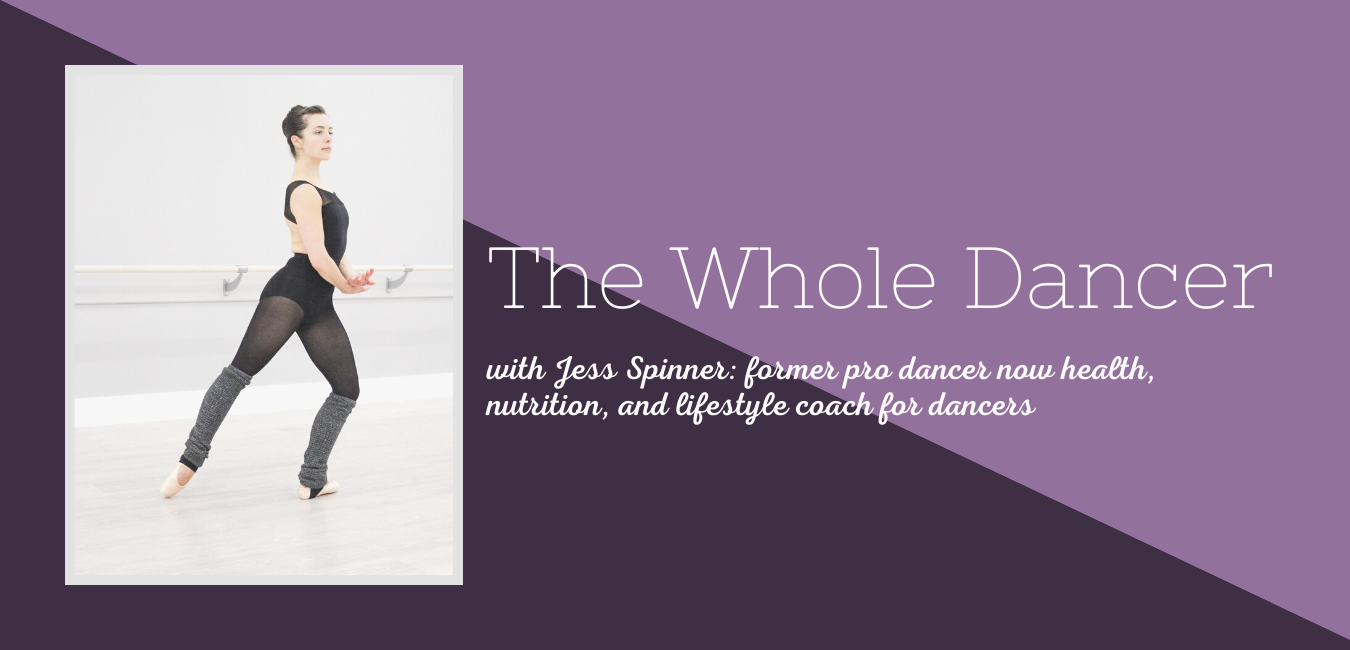Dancers and Emotional Eating
Dancers and Emotional Eating
Many dancers who I work with consider themselves “emotional eaters.” And while I’m not into labels, I’ve been there and I know it can feel like you’re eating all your stress and emotions. Emotional eating was a big part of my story in dance, and food was one of my primary coping mechanisms.
Here’s the thing. Emotional eating on its own isn’t necessarily a bad thing. When you eat for fun or in celebration, that’s perfectly normal and doesn’t have to be a big worry. If that’s what you think of when it comes to emotional eating, just work on being OK with that recreational eating.
But emotional eating can create challenges if it’s your primary or only coping mechanism for big emotions or stressful situations. This is why it’s an important topic to discuss — particularly around how it might impact dancers.
The discipline of dance and its impact on emotional eating.
There are some fundamentals to dance training and the dance mindset that naturally lead to emotional eating. You’re taught to toughen up and develop a “thick skin.” One of my ballet teachers said that when we entered the studio, we should forget everything going on outside. I see some value in this for sure — ballet provided relief from the drama of teenage life.
However, if you leave the drama outside and never face the emotions you’re experiencing, you may end up avoiding your feelings altogether. Food can become a way to suppress and push away negative or heavy feelings.
When you dance, you don’t speak (in most cases); therefore, many dancers identify as nonverbal communicators. We use our bodies to express our emotions and to share ourselves with the world. Again, that can be really beautiful, but if you leave certain emotions unresolved, you may turn to food for solace. Some dancers have a greater tendency to turn to food when upset because they’re otherwise being restrictive with food or under eating.

The perfectionist mindset in dance and secret eating.
The perfectionist mindset can also lead to emotional eating or secret eating. From an eating standpoint, many think of impeccably healthy eating as “perfect.” Never eating processed carbs, cookies, or sweets and instead staying “virtuous” and sticking to vegetables, fruit, and salads.
If you’re still living at home with family or even living with roommates, this may manifest in you eating “perfectly” when people are around and then losing control and eating whatever “bad” foods you can get your hands on when no one is looking.
Secret eating often leads to feelings of shame and guilt. When we feel shameful, we’re directly attacking our sense of self-worth. Secret eating and emotional eating can become patterns that are extremely hard to break on your own.
Why dancers struggle to work through emotional eating.
This leads to the next piece of emotional eating for dancers — when it comes to all things technical and artistic, we believe we can work through it and find the solution.
If we just dedicate ourselves enough, we will find the way out. Keep working, strengthen your willpower, find greater control — these are the tenets we try to adhere to because as dancers, this is what we’re taught.
It would be kind of crazy to think that these thoughts wouldn’t infiltrate other parts of our lives.
So if you find yourself using food as a coping mechanism, you might tell yourself that you should be able to overcome emotional eating on your own. You might think you just need to control your food intake better or be more disciplined. In fact, the opposite is true. You need to strengthen your alternative coping strategies and acknowledge that some emotionally driven eating is OK.
7 ways to move through emotions without using food as a buffer.
Practice talking.
Find out who you feel most comfortable sharing heavy emotions with. Is your mom the best at listening and responding? Maybe a best friend, mentor, or coach? By practicing communication and doing it more consistently, you’ll get better at it. Just like pirouettes.
Find alternative coping mechanisms.
Instead of food, is there an activity that might support you through what you’re feeling? Journaling, stretching, or walking in nature might do the trick. You just need to find ways to make those things as easy and readily available as the food in your pantry.
Eat “bad” foods in front of people.
When you get into the habit of hiding your eating practices, those hidden foods start to seem forbidden and off-limits. That mindset is going to make you crave the “bad” foods more, and finding a healthy balance can feel impossible.
To move away from this, commit to eating “bad” foods in front of people. No secret cookie eating. Enjoy the cookies openly with friends, family, roommates…even in front of your artistic director.
Ask yourself, “What am I feeling right now?”
When stress eating or emotional eating, you might go into autopilot. It’s possible you feel totally out of control.
Try to get into the habit of pausing whenever you eat and asking yourself if it’s true hunger motivating you or something else. This is going to allow you to take a step back and determine what you truly need. It might be a hug, or to chat with a friend, or yes, it could also be the cake!!
Look at your “Primary Food.”
In integrative nutrition health coaching, “Primary Food” includes career, physical activity, spirituality, and relationships. Most likely for dancers, career translates to dance (even if you’re currently pre-professional), and physical activity would likely encompass calming and uplifting movement outside of dance (like walks in nature or restorative yoga).
Explore connections between sleep, emotions, and eating behaviors.
Your sleep routines, and quality and quantity of sleep have a big impact on your hormones, which have a big impact on your needs and desires for food. Take some steps to improve your sleep, and take notice of your ability to cope with emotions.
Practice self-compassion.
Be kind to yourself. This will allow you to find motivation for helpful behavior change. When you’re kind and understanding towards yourself, you’ll be able to accept negative emotions. Then, feel the feelings. The next step is to let it go or find a way to cope in a way that’s aligned with your values. Finally, the emotion will start to pass naturally.
These 7 suggestions can be a great starting point but you don’t have to tackle this alone. Ask for help if you find yourself emotionally eating. Try new strategies to overcome it. There is a way out, but if you haven’t found it yet, you might need support. You’re worth it.
This post was originally published in July 2018
It was edited for content and clarity in September 2021
